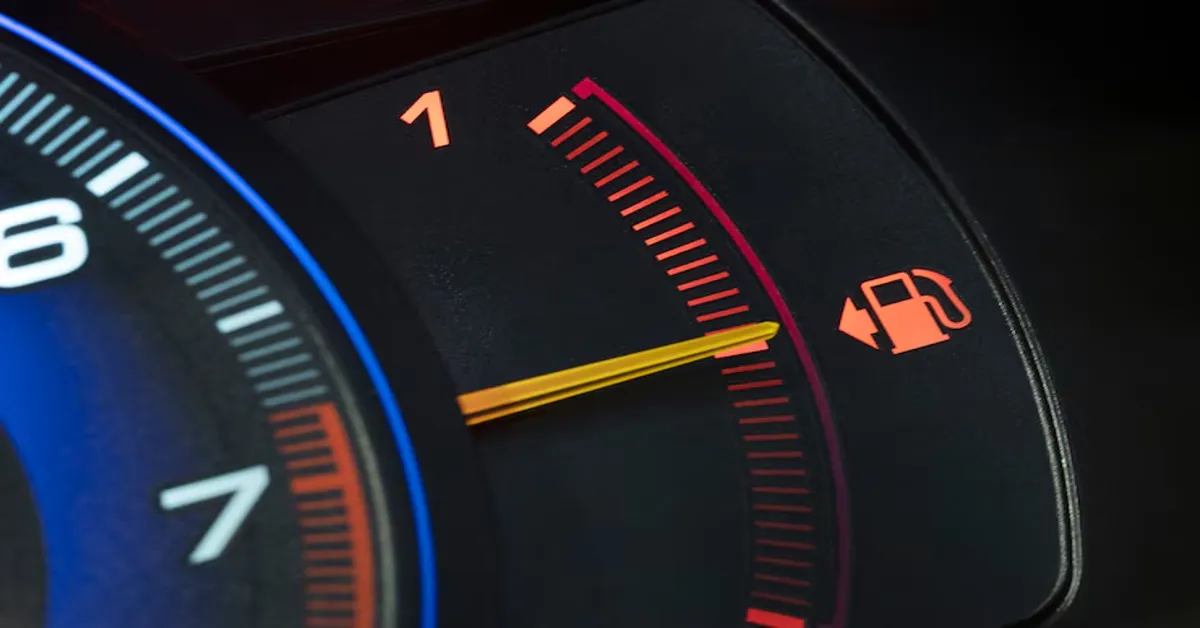What does it mean when your check engine light flashing?
A flashing check engine light is not just a friendly reminder—it is a serious warning. Unlike a steady light, which typically signals a non-urgent issue, a Check Engine Light Flashing means there is a potentially dangerous misfire occurring in your engine. This misfire could damage your catalytic converter, harm your engine’s internal components, or even cause a breakdown. If your check engine light flashing, you should stop driving as soon as it’s safe to do so and seek immediate diagnostics. In this guide, we’ll break down the causes, solutions, and preventive steps every driver should know.
Introduction: The Significance of a Check Engine Light Flashing
The Check Engine Light Flashing, also known as the Malfunction Indicator Lamp (MIL), is part of your vehicle’s onboard diagnostics (OBD) system. When it blinks rather than remains steady, it’s the car’s way of shouting: Something is critically wrong.
Manufacturers design this feature to alert drivers before catastrophic failure occurs. In most cases, a Check Engine Light Flashing indicates one or more cylinders are misfiring—unburned fuel is being pumped into the exhaust system, which can overheat and destroy the catalytic converter.
In 2025, with modern vehicles packed with digital systems, ignoring this signal could also cause software errors or sensor malfunctions that ripple through your car’s systems.
Understanding How the Engine Light System Works
Every modern car is equipped with an OBD-II (Onboard Diagnostic II) system, which continuously monitors engine and emission control functions. When a sensor detects a deviation from expected parameters, the OBD system logs a Diagnostic Trouble Code (DTC).
| Component Monitored | Typical Sensors Involved |
|---|---|
| Fuel Injection | Oxygen, Mass Airflow, Throttle Position |
| Ignition Timing | Crankshaft Position, Camshaft Position |
| Exhaust System | Catalytic Converter, O2 Sensors |
| Emissions | EGR Valve, Evaporative System |
The OBD-II system triggers the MIL when the problem could increase emissions by 1.5 times the federal standard or could damage essential components like the catalytic converter.
Common Reasons for a Flashing Check Engine Light
The following are the most common reasons behind a check engine light flashing:
- Engine Misfire: Faulty spark plugs, ignition coils, or fuel injectors.
- Fuel Delivery Issues: Clogged fuel filter or failing fuel pump.
- Catalytic Converter Threat: Unburned fuel causes overheating.
- Bad Oxygen Sensor: Incorrect fuel-to-air ratio.
- Vacuum Leak: Disrupts combustion efficiency.
- Timing Chain/Belt Problems: Causes cylinder firing errors.
- Aftermarket Tune Failures: Software mismatches in performance chips or ECU tuning.
Each of these problems can trigger one or more DTCs, stored in the vehicle’s computer system.
Why a Flashing Light Is Different from a Steady Light
| Light Behavior | Meaning | Urgency |
|---|---|---|
| Steady | Non-urgent malfunction (e.g., loose gas cap, mild misfire) | Medium |
| Flashing | Severe misfire or emissions threat | High |
A steady light is still serious, but a flashing light is immediate. Think of it this way: a steady light is a “check soon” message, while a flashing one is a “check now or risk major damage” alert.
Immediate Actions to Take When the Light Flashes
Step-by-step:
- Ease Off the Accelerator: Reduce strain on the engine immediately.
- Pull Over Safely: Find a safe location and stop.
- Turn Off the Engine: Prevent further damage.
- Restart to See if Light Returns: This can help isolate transient errors.
- Call for Diagnostic Support: Don’t assume it will resolve itself.
Do not continue driving unless it’s an emergency. Even short distances can damage the catalytic converter, which may cost over $2,000 to replace.
Diagnostic Trouble Codes (DTCs) and What They Reveal
Once you scan the car using an OBD-II scanner, you’ll retrieve one or more DTCs. Examples include:
| Code | Meaning | Severity |
|---|---|---|
| P0300 | Random/Multiple Cylinder Misfire | High |
| P0301-P0306 | Cylinder-Specific Misfire | High |
| P0420 | Catalyst System Efficiency Below Threshold | Medium to High |
| P0171 | System Too Lean (Bank 1) | Medium |
| P0351 | Ignition Coil A Primary/Secondary Circuit | High |
Auto shops and dealers have advanced scan tools that can read not just codes but live data streams from sensors—pinpointing problems in real-time.
Mechanical Damage from Ignoring the Warning
Failing to address a flashing engine light can lead to:
- Catalytic Converter Meltdown
- Cylinder Head Warping
- Piston Ring Scoring
- Valve Damage
- Engine Overheating
In worst-case scenarios, a simple misfire turns into a complete engine replacement. Repair costs can balloon from $150 (coil replacement) to $4,000+ (engine rebuild).
Flashing Light on Startup vs. While Driving
On Startup:
- May be due to moisture in the ignition system
- Often resolves with warming
- Still worth a scan
While Driving:
- Indicates active engine problem
- Usually gets worse under load (e.g., acceleration)
- Requires immediate attention
Knowing when the light flashes helps technicians trace the problem’s source.
Can You Drive with a Flashing Check Engine Light?
Technically, yes—but only for short distances and only to reach a repair location. The risk increases every minute you drive.
If the car is:
- Shaking or surging: Stop immediately
- Losing power: Don’t force it
- Smoking or overheating: Shut off the engine and tow the vehicle
Driving “just a little further” could cost you a new engine or more.
Using OBD-II Scanners for Quick Diagnostics
In 2025, Bluetooth-enabled OBD-II scanners have made diagnostics easy for the average driver. Top brands include:
- BlueDriver
- FIXD
- OBDLink MX+
These tools connect to your phone and interpret codes. Some also offer real-time repair cost estimates and verified mechanic feedback.
For those uncomfortable reading codes, many auto parts retailers will scan your car for free and print the codes.
Repair Costs and What to Expect
| Repair Type | Estimated Cost (USD) |
|---|---|
| Spark Plugs and Coils | $150–$400 |
| Fuel Injector Replacement | $300–$700 |
| Oxygen Sensor | $150–$300 |
| Catalytic Converter | $1,200–$2,400 |
| Vacuum Leak Fix | $100–$250 |
Early diagnosis and repair will always be cheaper than letting the issue cascade into deeper failures.
Preventive Maintenance to Avoid Future Issues
To avoid engine light issues altogether, follow these guidelines:
- Replace spark plugs every 30,000–100,000 miles
- Use top-tier fuel to prevent injector clogging
- Regular oil changes to keep sensors clean
- Avoid deep water driving, which can flood ignition components
- Tighten gas cap properly after fueling
Some modern vehicles allow drivers to schedule diagnostic checks from within their infotainment systems—make use of them.
Electric and Hybrid Vehicles: Do the Same Rules Apply?
In hybrids and EVs, the check engine light flashing still exists, but typically relates to:
- Emission control systems (in hybrids)
- Thermal management failures
- Battery regulation issues
- Faults in regenerative braking systems
While EVs lack a combustion engine, their management systems are just as complex, and ignoring warning lights can lead to battery degradation, loss of regenerative braking, or limp mode activation.
Myths and Misunderstandings About the Check Engine Light
Myth 1: A flashing light means the car will explode
Fact: It means severe damage is possible—not guaranteed
Myth 2: Resetting the battery will “fix” the light
Fact: This only clears the memory. The problem remains
Myth 3: If the car drives fine, it’s nothing
Fact: Many issues only show symptoms under specific conditions (e.g., under load)
Myth 4: You must go to the dealership
Fact: Independent shops can diagnose and fix most problem.
Conclusion
A check engine light flashing is not a signal to panic—but it is a signal to act. It represents one of the few unmistakable signs that your engine is at risk of costly damage if you continue driving. Fortunately, modern diagnostic tools, accessible mechanics, and built-in vehicle monitoring systems make it easier than ever to identify and address the issue early.
By understanding what this warning means, how to respond, and what not to ignore, you can protect both your vehicle and your wallet. In an age of increasingly intelligent cars, staying informed is the best way to stay mobile.
ALSO READ: What Is Mannacote? A Deep Dive Into Its Composition, Benefits, and Emerging Uses
FAQs
1. Is a flashing check engine light always serious?
Yes. A flashing light typically indicates a critical misfire or an issue that can lead to immediate damage. Do not ignore it.
2. Can low fuel cause a flashing check engine light?
Low fuel may cause lean mixture codes or misfires, but a flashing light usually signals a deeper ignition or combustion issue.
3. Can a bad battery cause a flashing engine light?
Unlikely. A weak battery may cause a no-start or accessory issues, but it won’t typically result in a flashing engine warning.
4. Is it safe to drive to the repair shop?
Only if the engine is running smoothly and you are going a short distance. Otherwise, have it towed.
5. Can I clear the code and keep driving?
Clearing the code without fixing the issue may make things worse and can erase important data needed for repair.









